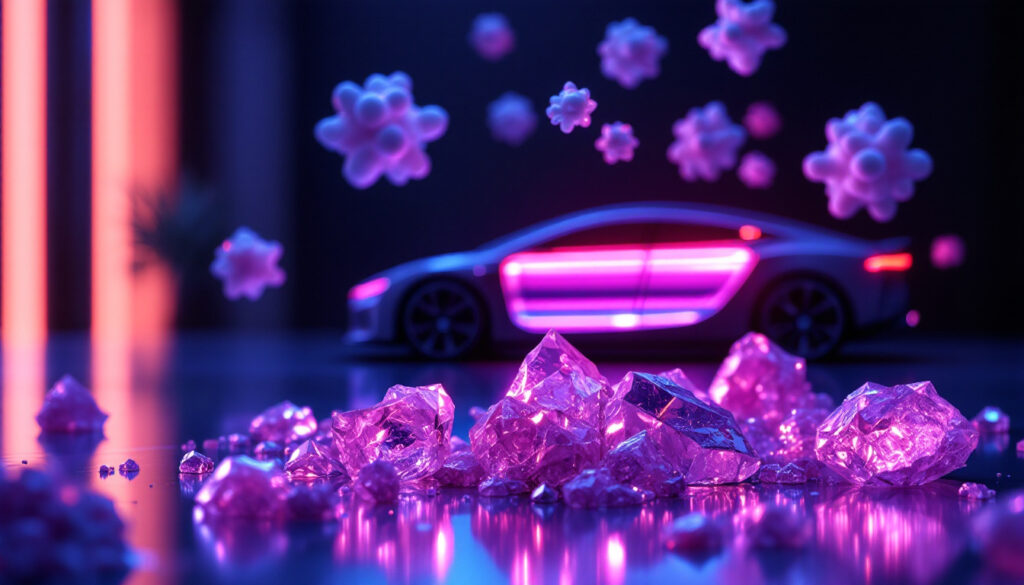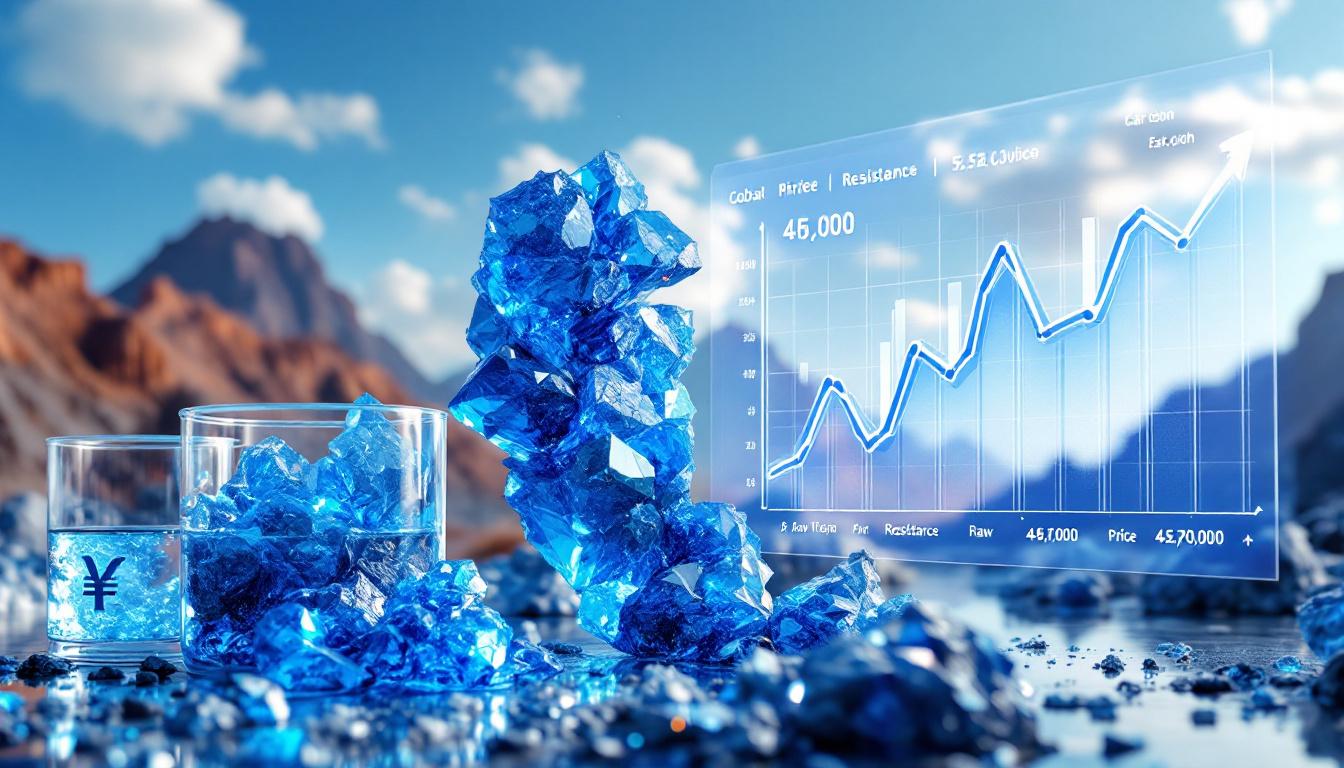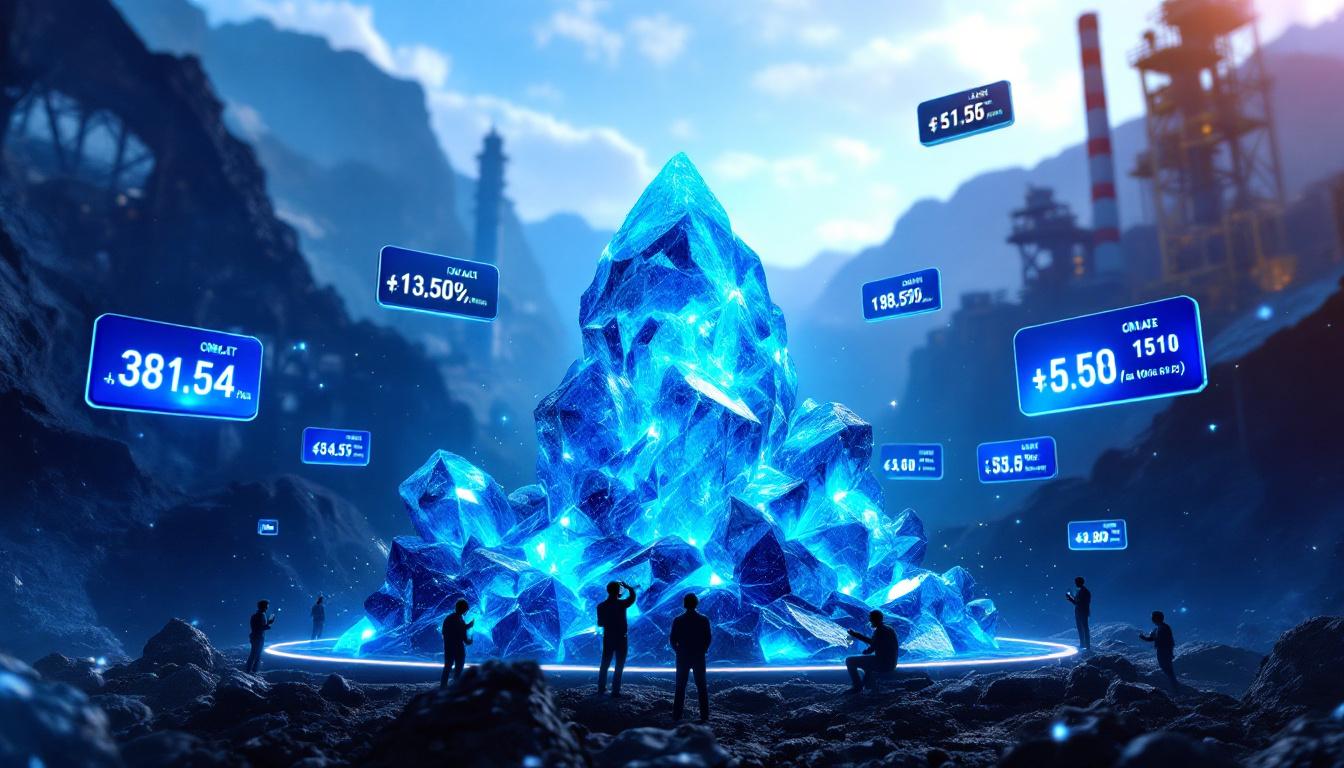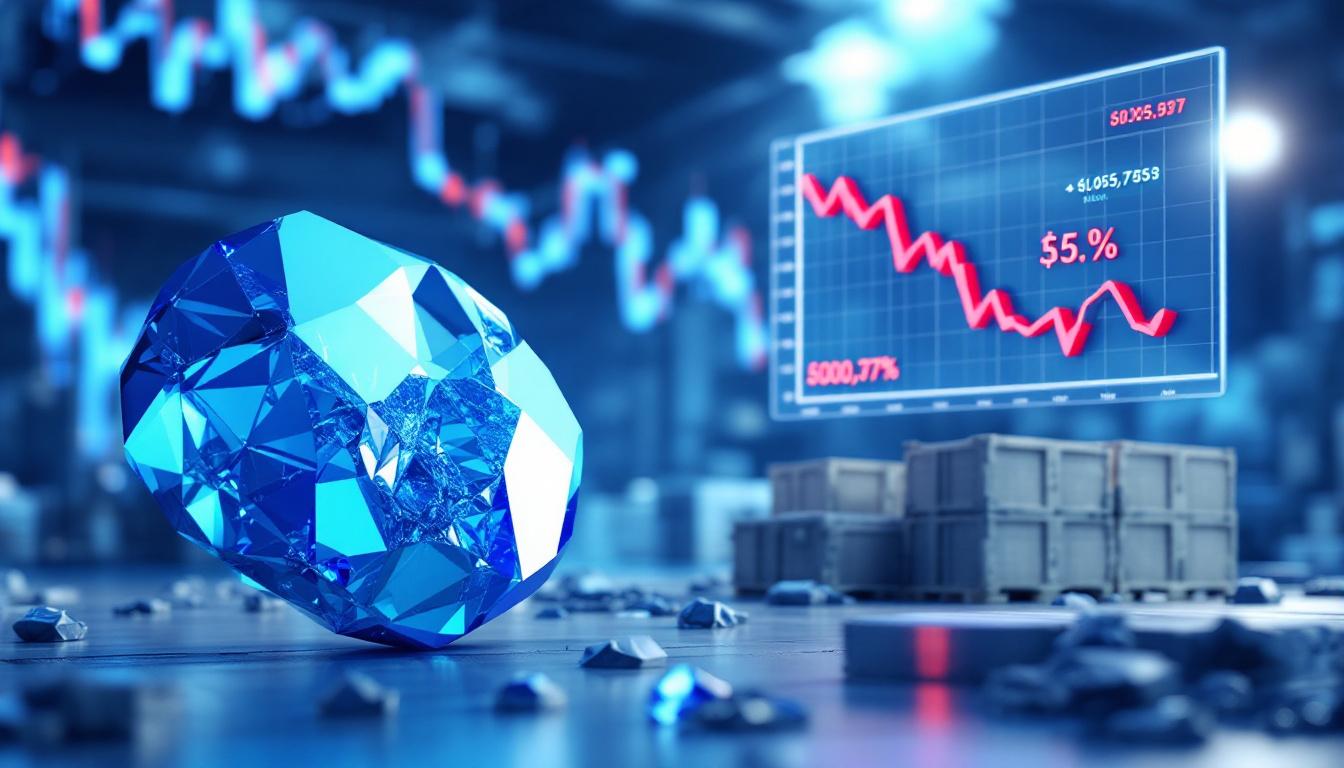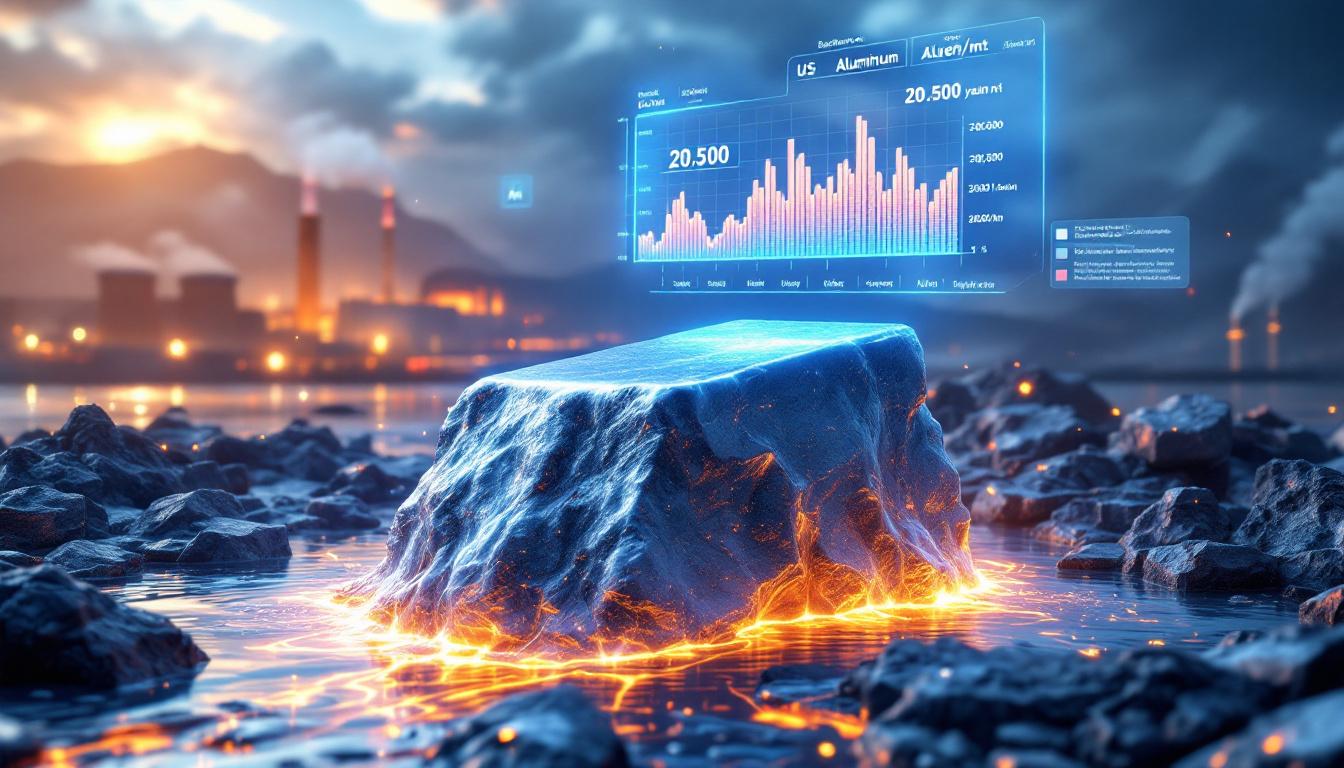What is High-Purity Manganese and Why is it Important?
High-purity manganese products have emerged as critical components in the electric vehicle (EV) battery supply chain. These specialty materials serve as essential precursors for multiple next-generation battery chemistries rapidly gaining market share in both the EV and energy storage sectors.
The global demand for battery metals investment is projected to grow at an impressive 25% CAGR through 2030, driven by the material's optimal balance of cost, safety, and performance characteristics. Unlike cobalt (priced at approximately $50,000/ton) or nickel, manganese offers comparable battery performance at a significantly lower price point of around $2,200/ton.
As Charles FitzRoy, Giyani's CEO, explains: "Manganese's role in next-gen batteries is transformative—it balances cost, safety, and energy density better than cobalt or nickel."
Key Manganese Battery Materials
-
High-Purity Manganese Oxide (HPMO): A refined manganese compound produced via hydrometallurgical leaching, used as a precursor for various battery cathode materials
-
High-Purity Manganese Sulfate Monohydrate (HPMSM): The preferred manganese precursor for NMC (nickel-manganese-cobalt) battery chemistries, requiring additional sulfation and precise crystallization processes
-
Stringent Purity Requirements: Battery-grade manganese products must meet extremely strict specifications of >99.9% purity with impurities like iron, lead, and cadmium limited to less than 50 parts per million
Rising Demand in Multiple Battery Chemistries
The importance of high-purity manganese extends across several battery technologies:
-
LMFP (Lithium-Manganese-Iron-Phosphate): A rapidly growing battery chemistry that offers improved energy density over traditional LFP batteries. Modern LMFP formulations contain 35-40% manganese, compared to just 10% in traditional LFP batteries.
-
LMNO (Lithium-Manganese-Nickel-Oxide): Emerging technology with promising performance characteristics, particularly in grid-scale energy storage applications where manganese-rich cathodes extend cycle life by up to 40%.
-
NMC (Nickel-Manganese-Cobalt): Currently the dominant chemistry in many EV applications, though manufacturers are working to increase manganese content while reducing costly cobalt.
Battery manufacturers worldwide, including Tesla, are accelerating LMFP adoption in their 2024-2025 roadmaps, recognizing manganese's potential to optimize the cost-performance ratio in mass-market electric vehicles.
How is Giyani Positioning in the Battery Materials Market?
Giyani Metals has taken a significant step forward in its strategy to become a key supplier of battery-grade manganese by making its first shipment of HPMO samples to potential offtakers for testing and qualification. This milestone represents more than a simple product shipment—it signals Giyani's entry into the exclusive club of non-Chinese producers capable of supplying high-purity manganese materials to Western markets.
The company's demonstration plant in Johannesburg, with its 1,000-ton annual HPMO capacity, serves as proof of concept for Giyani's proprietary production methods. Currently, three potential offtakers are in the testing phase as of Q2 2025, establishing Giyani's early position in the growing Western supply chain for battery recycling breakthrough technologies.
According to Benchmark Minerals: "Non-Chinese HPMSM producers could capture 15% of Western markets by 2030 if projects like Giyani's scale successfully."
Strategic Advantages of Dual Product Capability
Giyani's approach offers several competitive advantages:
-
Technological Flexibility: The ability to produce both HPMO and HPMSM provides product optionality, allowing the company to serve different segments of the battery market simultaneously
-
Market Adaptability: This dual capability enables Giyani to pivot between products based on market demands and price differentials
-
Cost Efficiency: The integrated dual-product facility design reduces CAPEX by approximately 20% compared to single-product facilities
-
Future-Proofing: As battery technology evolves, Giyani can adjust its production ratio between HPMO and HPMSM to match market requirements
Demonstration Plant as a Derisking Strategy
The company's demonstration plant plays a crucial role in its development pathway:
-
Scale-Up Validation: Successfully scaling from laboratory to demonstration scale represents the largest derisking event for novel processes—a strategy that has proven effective for other battery materials companies like Pilbara Minerals, whose lithium demonstration plant helped secure $500M in funding for commercial expansion
-
Unique Position: Giyani is currently one of the only developers outside China to demonstrate this step at scale, giving it first-mover advantage in Western markets
-
Process Optimization: The plant has already yielded valuable insights for the commercial facility design, particularly in real-time pH monitoring during crystallization processes
-
Investor Confidence: The operational demonstration plant provides tangible evidence of technical feasibility, significantly reducing perceived investment risk
What Technical Achievements Has Giyani Accomplished?
The demonstration plant operation has delivered several positive outcomes that strengthen Giyani's position in the battery materials market, including significant technical breakthroughs that enhance both commercial viability and environmental performance.
Process Improvements and Optimizations
Key technical achievements include:
-
Cleaner HPMO Production: Enhanced process efficiency has resulted in higher purity product while reducing reagent usage by approximately 15% through process optimizations
-
Reduced Environmental Impact: Engineering improvements have led to a 30% reduction in tailings waste volume through innovative by-product recovery techniques
-
Valuable By-Product Development: The process has yielded magnesium sulfate as a marketable by-product that can be sold to the agricultural sector at approximately $150/ton, creating an additional revenue stream
-
Patent-Pending Innovation: Giyani has developed a proprietary solvent extraction method for impurity removal that achieves better results than conventional techniques
As noted by a process engineer at the demonstration plant: "Real-time pH monitoring resolved scaling issues during crystallization, a critical breakthrough that improved both product quality and production efficiency."
Commercial Scale-Up Pathway
The demonstration plant provides critical insights for the full-scale commercial facility:
-
Design Specifications: Learnings from the demo plant directly inform commercial plant engineering, reducing technical risk during scale-up
-
Operational Experience: Hands-on experience with the process at scale allows operators to develop expertise before the commercial plant comes online
-
Technical Problem-Solving: Early identification and resolution of technical challenges prevents costly modifications during commercial operations
-
Optimization Opportunities: Continuous improvement initiatives at the demonstration plant have identified multiple efficiency enhancements that will be incorporated into the commercial facility design
These achievements position Giyani at the technological forefront of non-Chinese battery-grade manganese production, with significant implications for supply chain diversification in the EV battery industry.
When Will Giyani's Commercial Production Begin?
Based on learnings from the demonstration plant, Giyani has updated its project timeline to align with market developments and technical requirements. This schedule strategically positions the company to coincide with forecasted increases in demand for battery-grade manganese materials.
Revised Project Timeline
The company has established the following timeline milestones:
-
HPMSM Production: Targeted for Q3 2025, followed by offtake qualification trials with potential customers
-
Definitive Feasibility Study: Expected completion in Q1 2026, incorporating operational data from the demonstration plant
-
Commercial Facility Construction: Planned to commence in 2027, subject to financing and permitting approvals
-
Production Ramp-Up: Scheduled for 2028/29, coinciding with projected increases in OEM demand
This timeline is supported by the significant resource potential of Giyani's K.Hill deposit in Botswana, which holds an estimated 20 million tonnes of manganese ore at an average grade of 18%—substantially higher than typical manganese deposits.
According to Wood Mackenzie analysts: "Botswana's manganese output could triple by 2030 if Giyani meets its targeted production milestones."
Strategic Market Timing
This revised timeline strategically positions Giyani to:
-
Meet Forecast Demand: Align with projected increases in battery-grade manganese demand, particularly from Ford's 2028 LMNO battery program which alone will require approximately 50,000 tons of HPMSM annually
-
Coincide with OEM Plans: Synchronize with automotive manufacturers' timelines for introducing higher manganese content batteries
-
Capitalize on Market Growth: Enter full commercial production as the market for manganese battery materials expands, particularly in the energy storage sector
-
Leverage Policy Support: Benefit from Western government initiatives to reduce dependence on Chinese battery material supply chains
While financing details remain under development, industry sources indicate Giyani is in discussions with Afreximbank regarding a potential $300 million debt facility to support construction of the commercial facility.
How Does Giyani's Project Align with Battery Industry Trends?
The battery industry is rapidly evolving, with several major manufacturers announcing shifts toward higher manganese content in their battery chemistries. These developments align perfectly with Giyani's production capabilities and strategic direction.
Emerging Battery Technologies
Recent industry developments highlight the growing importance of manganese:
-
Ford and GM Breakthroughs: Both companies have announced lithium-manganese-rich battery technologies, with GM's 2026 Ultium batteries incorporating 25% more manganese than current NMC811 formulations
-
Increased Manganese Content: These new formulations contain substantially more manganese than current NMC batteries, improving cost structures while maintaining performance
-
Market Diversification: Battery manufacturers are exploring multiple chemistries to optimize performance and reduce costs, with CATL planning mass production of LMFP batteries by 2025
-
Energy Storage Applications: According to BloombergNEF, approximately 70% of new grid storage installations will utilize LMFP chemistry by 2030, creating substantial new demand for high-purity manganese
As noted by a Ford battery engineer: "Manganese-rich cathodes extend cycle life by 40% in energy storage system applications, making them particularly valuable for grid-scale implementations."
Giyani's Strategic Position
The company's dual-product capability positions it advantageously:
-
Product Flexibility: Ability to supply both HPMO and HPMSM depending on market needs allows Giyani to serve both current and emerging battery technologies
-
Technical Adaptability: Capacity to adjust production to meet evolving battery chemistry requirements ensures long-term relevance
-
Market Responsiveness: Positioned to serve multiple battery technology pathways as the industry continues to innovate
-
Recycling Integration: As battery recycling scales up, Giyani's processes can integrate with companies like Redwood Materials to create closed-loop manganese supply
This strategic positioning ensures Giyani remains relevant regardless of which specific battery chemistry ultimately dominates the EV and energy storage markets.
Why is Non-Chinese Manganese Supply Important?
The global battery supply chain is heavily concentrated in China, making alternative sources of battery materials strategically important for both economic and geopolitical reasons. Currently, China controls approximately 95% of global HPMSM refining capacity, creating significant supply chain vulnerabilities for Western EV manufacturers.
Supply Chain Diversification
Giyani represents an important development in supply chain diversification:
-
Geographic Diversification: A non-Chinese source of battery-grade manganese materials provides supply chain security for Western manufacturers
-
Technical Capability: One of few companies outside China demonstrating production at scale, breaking the technical monopoly
-
Western Supply Chain: Potential to support Western automotive manufacturers' supply chain security goals under policies like the Inflation Reduction Act's local-content requirements
-
Tariff Reduction: According to a U.S. Department of Energy report, "Western Mn projects could reduce EV supply chain tariffs by $1,500 per vehicle" under current trade policies
The European Union, which currently imports 100% of its European critical raw materials, has established targets to achieve 20% self-sufficiency by 2030—creating substantial opportunity for non-Chinese suppliers like Giyani.
Strategic Resource Development
The development of Giyani's Botswana project offers:
-
Resource Security: Development of strategic mineral resources outside traditional supply chains enhances global materials security
-
Economic Development: Potential economic benefits for Botswana through resource development, including improvements to the Trans-Kalahari railway infrastructure
-
Supply Chain Resilience: Contribution to more resilient global battery material supply chains through geographic diversification
-
Reduced Vulnerability: Mitigation of supply disruption risks for Western automotive manufacturers
These strategic benefits extend beyond simple economic considerations to encompass broader national security and industrial policy objectives for Western nations seeking to develop strategic minerals reserve capacity.
FAQs About Battery-Grade Manganese
What makes manganese "battery-grade"?
Battery-grade manganese products must meet extremely stringent purity requirements. For HPMSM, this typically means >99.9% purity with very low levels of specific impurities that can harm battery performance, such as iron, lead, and cadmium. The manufacturing process must eliminate these impurities while maintaining the correct chemical composition required for battery cathode production.
Particularly critical are cadmium levels, which must remain below 10 parts per million to prevent battery thermal runaway issues—a safety consideration that requires specialized processing techniques.
Why are automotive manufacturers increasing manganese content in batteries?
Manganese offers several advantages in battery formulations:
-
Cost Efficiency: Mn-based cathodes reduce cell costs by approximately $10/kWh compared to NMC811 formulations
-
Improved Safety: Higher thermal stability and safety characteristics reduce fire risks
-
Performance Balance: Good energy density when used in optimized formulations
-
Supply Security: More abundant global supply compared to cobalt
-
ESG Advantages: Reduced environmental and social concerns compared to cobalt mining in the Democratic Republic of Congo
How does the production of HPMO differ from HPMSM?
While both products start with high-purity manganese oxide as a base, HPMSM requires additional processing steps:
-
HPMO Production: Involves purification of manganese ore through hydrometallurgical processes to remove impurities
-
HPMSM Production: Takes purified manganese oxide and converts it through a sulfation process requiring precise control of reaction conditions
-
Crystallization Challenges: The final crystallization and drying steps for HPMSM require precise control to achieve the correct crystal structure and hydration level
-
Quality Control: HPMSM production requires more sophisticated analytical techniques to ensure consistent quality
What are the key challenges in producing battery-grade manganese materials?
The production of battery-grade manganese faces several technical challenges:
-
Ultra-High Purity: Achieving and maintaining consistent ultra-high purity levels requires sophisticated process controls
-
Impurity Removal: Eliminating specific impurities that affect battery performance demands specialized techniques
-
Scale-Up Complexity: Scaling production processes from laboratory to commercial scale presents significant engineering challenges
-
Energy Optimization: Balancing energy consumption and environmental impact while maintaining product quality
-
Evolving Specifications: Meeting increasingly stringent specifications from battery manufacturers as technology advances
Companies implementing modern mine planning processes must obtain UN 38.3 certification for their materials to verify safety and performance characteristics before they can be integrated into commercial battery supply chains.
How does manganese compare to other battery materials environmentally?
Manganese extraction and processing typically has a smaller environmental footprint than other battery metals:
-
Lower Energy Intensity: Requires less energy to process than nickel or cobalt
-
Reduced Water Usage: Typically uses less water in processing than lithium production
-
Social Impact: Avoids the human rights concerns associated with cobalt mining in the DRC
-
Carbon Footprint: When processed using renewable energy, can have a substantially lower carbon footprint than other battery metals
These environmental advantages make manganese an increasingly attractive option as battery manufacturers focus on reducing the lifecycle environmental impact of their products.
Want to Profit from the Next Major Mineral Discovery?
Discover why high-purity manganese and other critical minerals trigger substantial market returns by exploring Discovery Alert's dedicated discoveries page, where the proprietary Discovery IQ model converts complex mineral data into actionable investment insights for ASX traders seeking a market-leading advantage.
